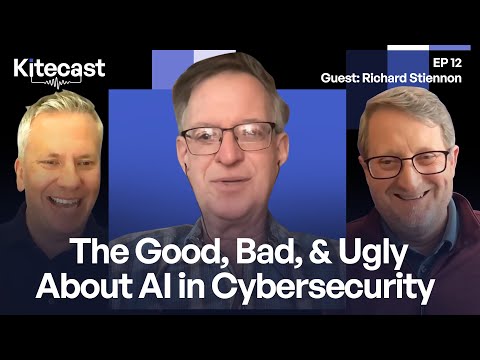👉 IT-Harvest: www.it-harvest.com
👉 Published Books:
1. https://www.amazon.com/Net-Zeros-Ones-Promotes-Sustainability-ebook/dp/B0BN72M57X/ref=sr_1_3
2. https://www.amazon.com/Secure-Cloud-Transformation-CIOS-Journey/dp/1945254203
3. https://www.amazon.com/There-Will-Be-Cyberwar-Network-Centric/dp/0985460784/
4. https://www.amazon.com/Surviving-Cyberwar-Richard-Stiennon/dp/1605906883/
Richard Stiennon, a cybersecurity pioneer, author, and industry executive, spoke about the hottest trending topic of our day in this Kitecast episode: artificial intelligence (AI). He currently serves as the Chief Research Analyst at IT-Harvest, a research organization he founded in 2017, which provides access to data on more than 3,318 cybersecurity vendors. To streamline and automate the compilation of data, Stiennon explains how IT-Harvest is using ChatGPT 4.0. Stiennon discusses how AI is transforming cybersecurity—both for the good and the bad.
Cybercriminals are finding ways around guardrails instituted in commercially available AI solutions like ChatGPT and Bard or simply developing their own to accelerate the development of malware, automate advanced persistent threats, and generate human-like phishing and spear-phishing attacks. At the same time, cybersecurity vendors are rapidly adding new AI capabilities to their product portfolios that improve the efficacy and efficiency of threat prevention, incident response, threat correlation and analysis, and more. Beyond the topic of AI, Stiennon addressed his thoughts on the role of cybersecurity leaders and subject-matter experts when it comes to serving as a board member or advisor. As a board member and advisor for a number of cybersecurity and compliance companies, he argues that organizations need to rethink how cybersecurity is discussed at the business level. Rather than teaching CISOs to speak the language of the business, they need to speak the language of cybersecurity and teach boards to understand cybersecurity risk through the lens of cybersecurity.





